On Jan twenty-nine, 1886, Carl Benz, a German engineer applied for a patent for his “vehicle powered by a gas engine.” The patent (no.37435) could also be regarded to be the birth certificate of the automobile.
The automobile industry has been growing since the late eighteenth century and appears to never finish. Vehicles became a necessity for all, if it wasn’t for vehicles, we probably would still be riding horses. With the development in ability and technology, there has been growth in the auto industry. From look to power and advanced capabilities, the vehicles of current era are perpetually evolving. These changes resulted in a number of the largest automotive producing milestones over the years.
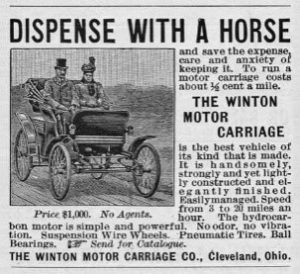
1898 — First Auto Ad
The very first auto ad appeared in 1898 in an Ohio newspaper and not just any newspaper but the ‘Scientific American’. The very same Scientific American would eventually detail the work of Einstein. The title of the pilot auto ad was quite on spot in terms of marketing, too. It included the call to action “Dispense with a horse” and the copy of the ad talked about the benefits of the Winton Motor Carriage- Not as costly to maintain, no odour, and the speed of up to 20 mph. No horse would ever be so powerful. Simple and self-explanatory.
1908 — Ford’s Model T
On Oct one, 1908, Henry Ford debuted the primary production Model T Ford at the company’s Piquette Avenue plant in Motown. Building a whole supported quality and affordability, the Model T appealed to a good vary of yank customers. From 1908 to 1927 Ford designed some fifteen million Model T cars creating it the longest production run of any automobile model in history till the Volkswagen Beetle surpassed it in 1972.
1911 — the electrical Starter
A cumbersome hand crank start-up method was improved upon with the electrical starter, developed by Charles Franklin Kettering and Henry M. Leland in 1911. This electrical starter was created sufficiently little to fit underneath the hood of a car; quite engineering achievement. The starters were initially put in by Cadillac in production models in 1912.
1928 — Coloured print advertisement
In the beginning of the 20th century with the increasing penetration of automobiles, manufacturers needed to stand out in the growing crowd. This is why they turned to advertisement agencies. Car ads became brighter and more colourful. Even in the ’30s, when America was struggling with The Depression, car ads remained the bright spot in the dark papers. At that time cars were still a luxury, so it was logical that they would target those who were not greatly affected by hard financial times.
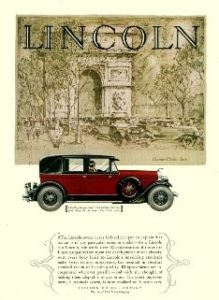
1940 — air conditioner
Car AC came in to existence around 1940. The Packard was the primary automotive to own it, and by 1969 quite 0.5 the cars factory-made enclosed A/C units.
1951 — motor racing
Automobile racing began soon after the invention of the gasoline- (petrol-) fuel internal-combustion engine in the 1880s. The first organized automobile competition, a reliability test in 1894 from Paris to Rouen, France, a distance of about 80 km (50 mi), was won with an average speed of 16.4 kph (10.2 mph).
The Hudson Hornet was a race car in disguise. This low-slung sedan (thanks to the “step-down” frame) handled better than most cars of the day. And the “Twin H” straight Six was powerful, torquey, and could be modified to produce even more in the hands of race mechanics like Smokey Yanick. It was a legendary NASCAR-winning machine and piled up 80 wins between 1951 and 1955. The Hornet proved to be nearly invincible in stock-car racing.
They used this to promote their sales like other brands. In those early eras, racing became very important for all big car makers. It was a great opportunity for promoting their cars.
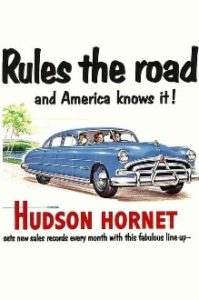
1959 — Best Ad of 20th century
Think Small was one of the most famous ads in the advertising campaign for the Volkswagen Beetle, art-directed by Helmut Krone. The copy for ‘Think Small’ was written by Julian Koenig at the Doyle Dane Bernbach (DDB) agency in 1959. Doyle Dane Bernbach’s Volkswagen Beetle campaign was ranked as the best advertising campaign of the twentieth century by Ad Age.
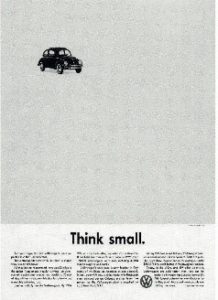
1980s — Use of photographs in Ads
The Think Small campaign created a new trend. It brought photography in, and artwork was left behind in the first half of the century. Clever lighting and trick exposures replaced the artist’s pen. Towards the second half of the 20th century, car advertising was already a professional area for photographers. The first studio photoshoots took place in the 1980s and showed a completely new side of cars. One full of elegance and style. These were the years in which automobile ads reached their peak in numbers. There were cases when one magazine would feature between twenty and twenty-five car ads in one issue.
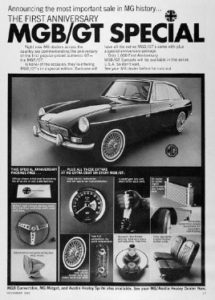
1990s — Safety regulations
In the 1990s, most car ads were promoting the technology that you could find in vehicles, describing certain innovations. The 90s saw the introduction of stricter regulations in vehicle safety for the first time. It seems like the 90s were the time when marketers realized that each needed to occupy a unique territory with their brand. They started building it from the product – showing the unique in what had already become a commodity. This led many brands to include safety as a big part of their narrative, too.
The Range Rover 4WD, for example, issued an ad with a horrifying image of a stop sign. The ad focused on the vehicle’s anti-lock brake system that “enables you to maintain steering and control in anything from a downpour to a blizzard.” It proclaimed that there was only one car that could save drivers from danger and it was the Range Rover.

2000s — good Technology and good Cars
One of the largest milestones in automobile producing is that the use of progressive technology to yield intelligent cars. Mechatronics, a hybrid of multiple engineering disciplines, is wide utilized in automotive producing and allows the assembly of quality cars integrated with good technology, like automatic braking systems, collision sensors, and self-driving capabilities.
Current trend of automobile in India
In 2020, India was the fifth-largest auto market, with ~3.49 million units combined sold in the passenger and commercial vehicles categories. With a total sale of 1,13,033 units in the month of August 2020. Maruti Suzuki Alto 800 and Alto K10 have been the most sold car in India for the longest period of time and has seen most of its sales coming from Tier-2 and tier-3 cities. Hatchback cars mostly sold due to affordability and the fuel efficiency that they give, but what are in trend are compact SUVs and primum hatchbacks in Indian market such as Hyundai Creta, KIA Seltos, Suzuki Brezza.
Future possible trends in India
Electric vehicles (EV) are currently booming in outside markets, where there are big players in market such as Tesla model 3 alone held biggest share of 14% of worlds electric vehicle sales in 2019. In 2020 Currently, there are more than 8 electric cars on sale in India. Of these, the Strom Motors R3 is that the most cost-effective energy unit whereas the big cat I-Pace is that the costliest motorcar in India. Newly launched electric cars in India include BMW i3, MG ZS EV, Hyundai Kona, Mahindra E Verito, TATA Nexon EV, Tigor EV and Tata Altroz EV among others.
Currently there are many barriers in India for EV’s such a as charging spots is big limitation as they create problem for convenience of user. But surely this problem is being solved in fastest way, currently there are 386 EV Charging Stations have been installed through the Department of Heavy Industry (DHI) under Phase I of Faster Adoption and Manufacturing of (Hybrid &) Electric Vehicles in India (FAME India) Scheme, bringing the total number of stations installed at 970, so far.
Auto pilot cars in India
India is yet to develop infrastructure in this area. Even in foreign countries where the drivers’ follow traffic discipline and are miles better than those of the Indian drivers, still serious accidents occur quite frequently in these vehicles. Considering this, we tend to be surprised by how Indian drivers, who are quite notorious, would behave with such refined self-driving machinery at their disposal. This is one of the primary reasons why we are not ready for self-driving cars in India. Given the poor driving etiquettes, pitiable road conditions and laxity that’s often displayed by the cops, this car feature could be a tad too much to handle for many Indian drivers.
Yash Koli || PGPBM&A
yash.koli@northpointindia.com
